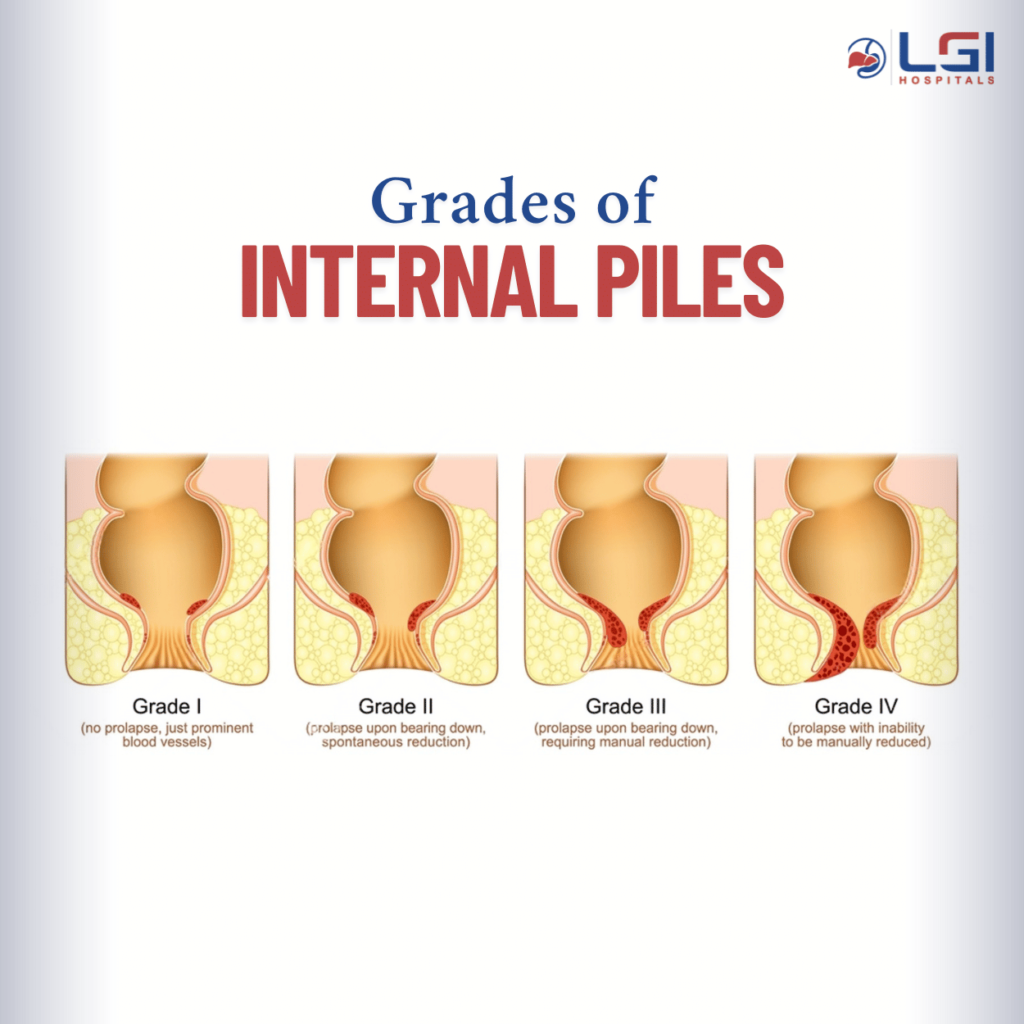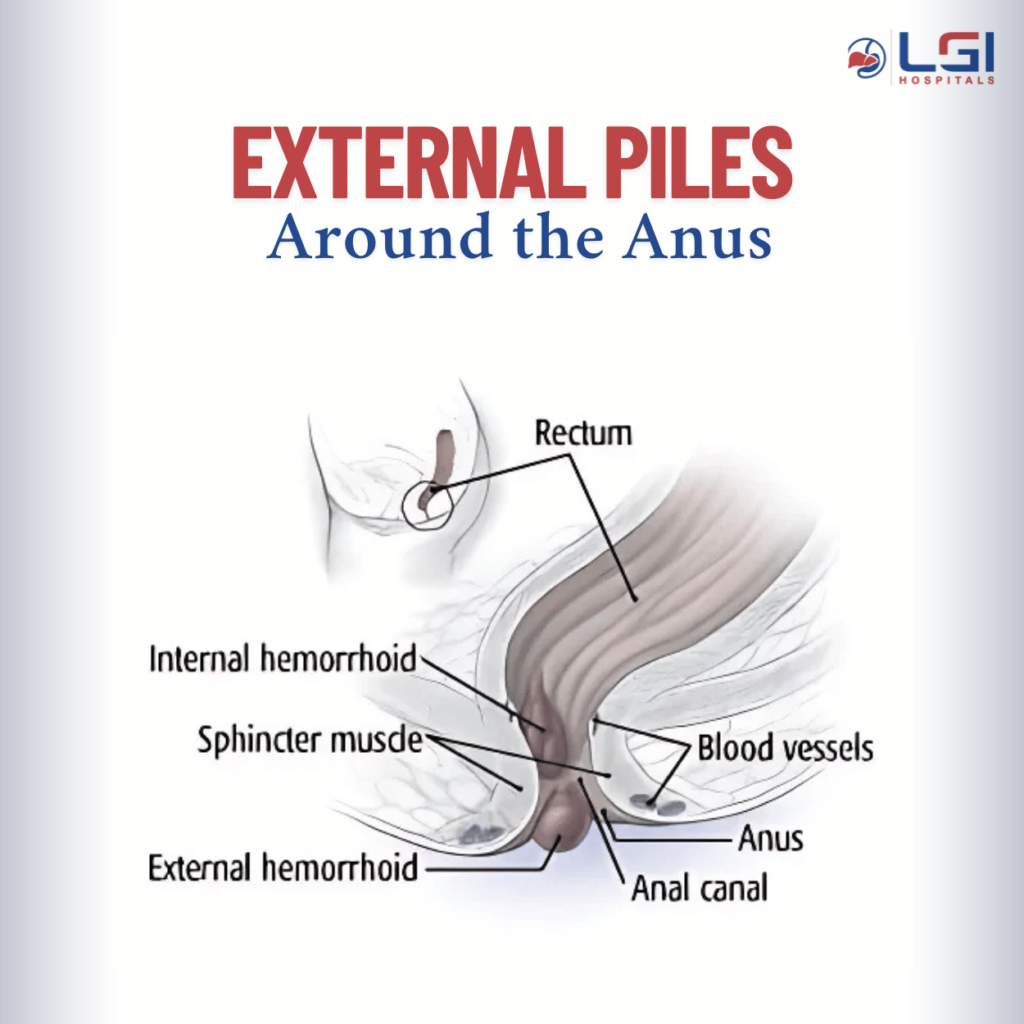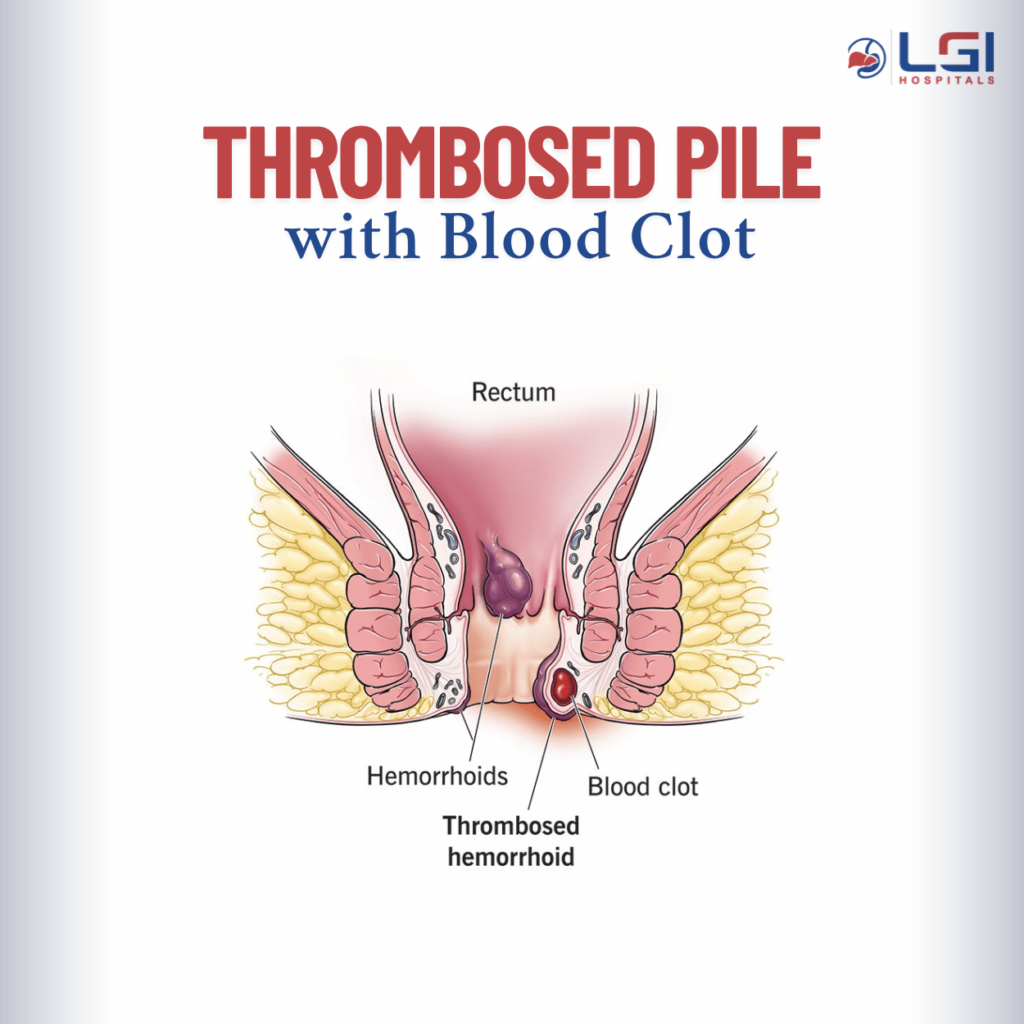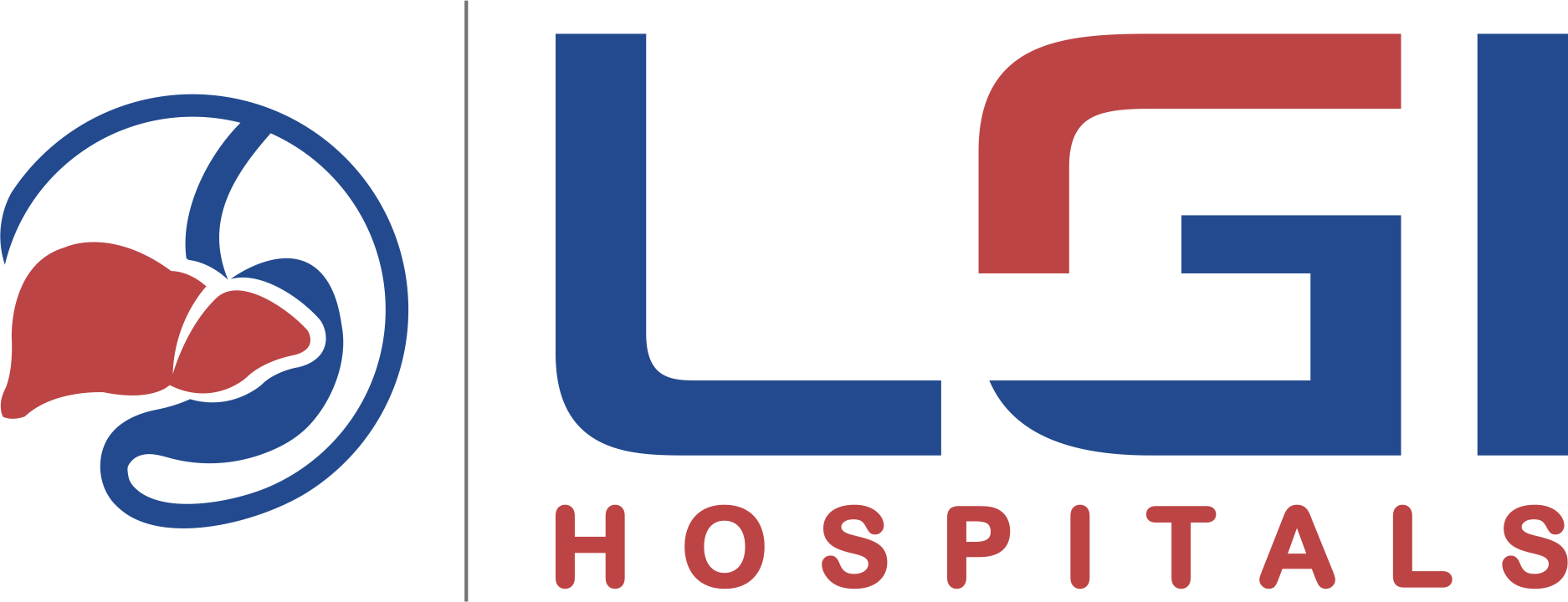Piles, also known as hemorrhoids, are swollen and inflamed veins in the lower rectum and anus. While common and often mild, they can cause significant discomfort and complications if left untreated. Understanding the different types of piles, their causes, symptoms, and knowing when to seek medical help is crucial for timely relief and recovery.
What Are Piles?
Piles are classified into types based on their location and severity. They may occur inside the rectum (internal) or outside the anal opening (external). Some may protrude outside during bowel movements and retract on their own or need manual intervention.
Types of Piles
Piles are generally classified into three main types:
1. Internal Piles
Description:
These develop inside the rectum and are usually not visible or painful in the early stages. However, they may cause painless bleeding during bowel movements.
Grades of Internal Piles:
| Grade | Description |
| Grade I | Small swellings inside the rectum, no prolapse. |
| Grade II | Prolapse during straining but retracts automatically. |
| Grade III | Prolapse during defecation and requires manual pushing back. |
| Grade IV | Permanently prolapsed and cannot be pushed back. It may be painful and require surgery. |

2. External Piles
Description:
These form under the skin around the anus and are usually visible as swollen lumps. They can be painful, itchy, and may cause bleeding if irritated.
Symptoms May Include:
- Pain while sitting
- Swelling or a lump near the anal opening
- Itching or irritation in the anal region
- Bleeding during or after bowel movements

3. Thrombosed Piles
Description:
This is a severe form of external piles where a blood clot forms inside the hemorrhoid, causing intense pain, swelling, and sometimes purplish-blue discoloration.
Symptoms Include:
- Severe pain
- Hard, tender lumps
- Swelling
- Sudden onset after straining or lifting

Common Causes of Piles
- Chronic constipation
- Straining during bowel movements
- Sedentary lifestyle
- Obesity
- Pregnancy
- Low-fiber diet
- Prolonged sitting on the toilet
- Heavy lifting
Symptoms of Piles
The symptoms vary based on the type and severity of piles but commonly include:
- Bleeding during or after bowel movements
- Itching or irritation in the anal region
- Pain or discomfort, especially while sitting
- Swelling around the anus
- Mucus discharge after passing stool
- A lump near the anus that may be sensitive or painful
When to See a Doctor
While mild cases of piles can be managed with lifestyle changes and home remedies, you should consult a doctor immediately if:
- Bleeding persists or becomes heavy
- Pain is severe and constant
- A lump does not go away or becomes increasingly painful
- Bowel movements are consistently difficult or painful
- You experience signs of infection (fever, pus)
Early treatment can prevent complications like anemia, infection, or strangulated piles.
Diagnosis and Treatment
At a hospital, piles are diagnosed through physical examination, digital rectal exam, and in some cases, anoscopy or colonoscopy.
Treatment Options May Include:
- Lifestyle changes (fiber-rich diet, hydration, exercise)
- Medications (creams, suppositories, pain relievers)
- Minimally invasive procedures like rubber band ligation or sclerotherapy
Surgical options such as hemorrhoidectomy or stapled hemorrhoidopexy for advanced cases
Get Expert Care at LGI Hospital, Nagpur
If you or your loved one is struggling with piles or chronic constipation, LGI Hospital in Nagpur offers advanced diagnosis and specialized treatment for all types of piles. With experienced proctologists, non-invasive procedures, and a compassionate approach, LGI Hospital ensures safe and effective recovery.
Book an appointment today and take the first step toward a pain-free life.

